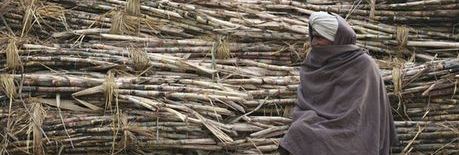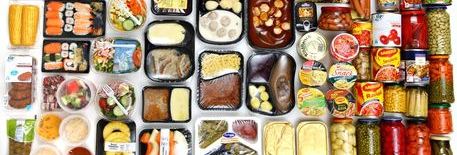Meeting water and energy challenges in agri-food sector with technology
Article by Wayne Visser
Part of the Sustainable Innovation & Technology series for The Guardian.
Innovations in sugar cane processing to reduce water use and produce energy will help to meet future agricultural product demands
Worldwide, the overall growth in demand for agricultural products will require a 140% increase in the supply of water over the next 20 years compared to the past 20 years. While the bulk of this demand will be from irrigation, food processing plants can also be water intensive. So, any technological innovations in the industry that save water are welcome.
One such innovation is by Mars Petcare, which has developed a recirculation system that reduces the potable water used for cooling in its pet food production process by 95%. Wastewater is also down by 95% and gas by 35% through the use of a treatment method that keeps the water microbiologically stable.
In Brazil, water used in sugar cane processing has gone down from 5.6 to 1.83 cubic metres (m3) per tonne in recent years, due to improved technologies and practices in waste water treatment.
Further reductions can be made by replacing the standard wet cane washing process with a new technique of dry cane washing. Costa Rican company Azucarera El Viejo SA has found that this switch has resulted in more than 6m gallons of water being saved each day during the harvest season, netting savings of approximately $54,000 (£32,000).
Of course, in food processing, it is not only volume of water that is important, but also the quality of water effluent associated with the manufacturing process. In Brazil, sugar cane is partly processed into ethanol. Vinasse is a byproduct of this process that pollutes water. Technological innovation shows that, while in Brazil emissions of 10-12 litres of vinasse per litre of ethanol are standard, levels of 6 litres can be achieved.
Other examples of innovative water quality solutions in the agri-foods sector are Briter-Water, which has been piloted in the EU and uses intensified bamboo-based phytoremediation for treating dairy and other food industry effluent; and the Vertical Green Biobed, developed by HEPIA, a school from the University of Applied Sciences of western Switzerland, to improve water treatment of agricultural effluents.
Generating energy from agricultural waste
Besides water issues, agriculture is also very energy intensive, accounting for 7% of the world’s greenhouse gas emissions, according to 2010 figures. Even carbon emissions associated only with direct energy use by the sector stand at 1.4% of the world’s total. Energy efficiency technologies will certainly help, but there is an equally big innovation opportunity in generating energy from agricultural waste.
It is estimated that the global biofuels market could double to $185.3bn (£110.5) by 2021 and that next generation sugar cane bagasse-to-biofuels technologies could expand ethanol production in key markets like Brazil and India by 35% without land or water intensification. Experiences in this rapidly growing industry suggest some lessons which can be applied to sustainable technology innovation more generally.
Lesson 1: technologies must be ready-for-market
There are always competing technological solutions at the Research and Development (R&D) phase, but a critical test is which ones are ready to scale commercially. In the case of cellulosic biofuel technologies, despite early research into wheat straw and corn stover, sugar cane biomass ended up being more commercially attractive to big investors like Blue Sugars, Novozymes, Iogen, Beta Renewables, DSM and Codexis.
Lesson 2: partnership is critical for success
There have been few standalone projects announced. Instead, technology companies from the US and the EU have generally teamed up with large aggregators of bagasse like Raizen and Petrobras. Apart from technology transfer benefits, access to already-aggregated bagasse is economically essential.
Lesson 3: policy support and market demand attract investment
Brazil is especially attractive as a technology transfer destination due to a combination of policy certainty and strong ethanol demand. This combination is also stimulating parallel next generation biofuels. Most notably GraalBio and Praj have significant projects targeting other feedstocks such as straw.
Investment in biofuels can also generate significant economic value for agri-food processors. During the sugar cane harvest, the left over fibre is burned and converted into energy via bagasse-to-biogas production. During the 2011-12 harvest, approximately 38m kWh of energy derived from bagasse-to-biogas production was sold by Azucarera El Viejo to the Costa Rican Electricity Institute, bringing over $3m (£1.79m) of income to the company.
In Nepal, the Biogas Support programme installed over 250,000 domestic biogas plants in rural households between 1992 and 2011, using cattle manure to provide biogas for cooking and lighting, replacing traditional energy sources such as fuel wood, agricultural residue and dung. Besides health benefits from less indoor smoke, the project has cut 625,000t of CO2.
And in Rwanda, there is a proposal – yet to be approved and implemented – for two biofuels companies, Eco-fuels Global and Eco Positive, to invest $250m (£149m) and grow 120m jatropha trees, helping to make Rwanda self-reliant in biodiesel by 2025 and bringing jobs to 122 small oilseed-producing cooperatives with over 12,000 members.
Download
[button size=”small” color=”blue” new_window=”false” link=”http://www.waynevisser.com/wp-content/uploads/2014/10/article_sustech3_wvisser.pdf”]Pdf[/button] Meeting water and energy challenges in agri-food sector with technology (article)
Related websites
[button size=”small” color=”blue” new_window=”false” link=”http://www.waynevisser.com/books/the-quest-for-sustainable-business”]Link[/button] The Quest for Sustainable Business (book)
[button size=”small” color=”blue” new_window=”false” link=”http://www.kaleidoscopefutures.com”]Link[/button] Kaleidoscope Futures (website)
[button size=”small” color=”blue” new_window=”false” link=”http://www.csrinternational.org”]Link[/button] CSR International (website)
Cite this article
Visser, W. (2014) Meeting water and energy challenges in agri-food sector with technology. The Guardian, 13 August 2014.




